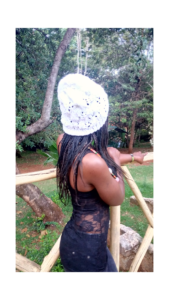Howdy positive thinkers and team yarnkara. I hope this post finds you well.
Today I would like to let you in on an easy DIY project; how to knit a hat using the ribbed pattern.
For this project you are going to need the following materials –
•Yarn of preferred colour and size
•A size 4, 32 inch circular knitting needles
•A size 4.5, 32 inch circular knitting needles
•A pair of scissors
•Stitch markers
•A measuring tape
•A darning needle

Skill level requirement:
•Intermediate knitter
Stitches used
•Knit stitch (K)
•Purl stitch (P)

-Circumference of the hat-21 inches
-Knitting method used-circular knitting using circular needles
-Pattern used- ribbed pattern

THE PATTERN
•Using your size 4 circular needles, make a chain of 84-90 stitches, this may differ depending on the size of the needle and the yarn you are using.
•Make sure all your stitches are aligned properly before joining
The brim
•For the brim, knit one stitch followed by a purl stitch(K1,P1).
•Do this for 10-15 rows

The body
•Switch to the size 4.5 knitting needles; Knit one stitch and purl the next stitch. Repeat this all round.
•Repeat the K1, P1 until you reach the desired height
The crown
•Change from your circular needles and put your yarn through the darning needle
•Pass your yarn through all stitches and pull tight. You can repeat this twice then fasten off and weave in your loose ends.
•Cut your remaining yarn and your project is complete

The stitch markers are used to mark the beginning of each row.
I also knitted the purple cowl, using the same pattern.

THOUGH CONDITIONER.
Most people look at their current state of affairs and say, “This is who I am.” That’s not who you are. That’s who you were. Lets say for instance that you don’t have enough money in your bank account, or you don’t have the relationship that you want, or your health and fitness aren’t up to par. That’s not who you are; that’s the residual outcome of your past thoughts and actions. So we’re constantly living in this residual, if you will, of the thoughts and actions we’ve taken in the past. When you look at your current state of affairs and you define yourself by that, then you doom yourself to having nothing more than the same in the future.
James Ray
























































